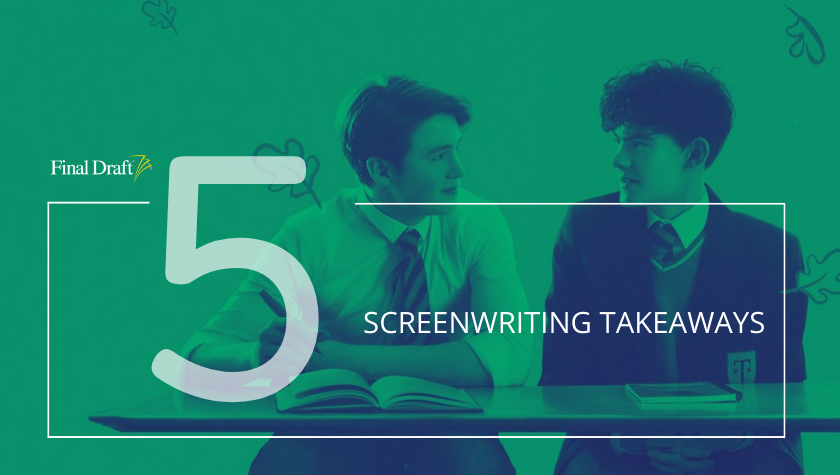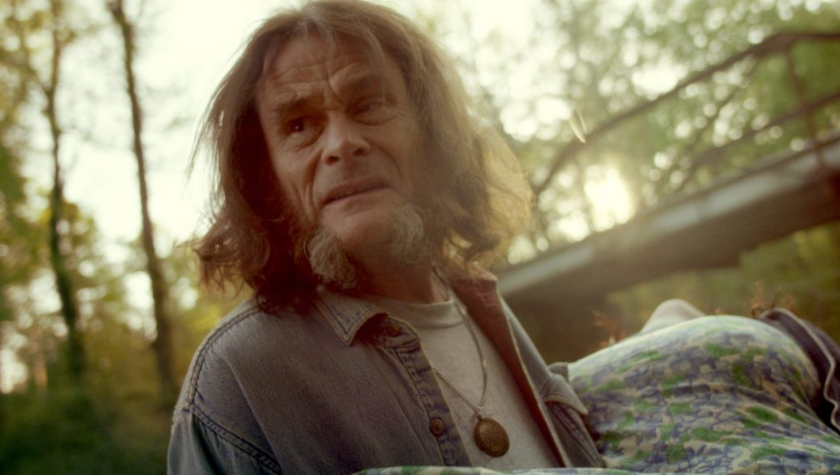Like a Good Jazz Song, 'The Eddy' is Loose, Unrefined and Will Hit You Right in the Heart
May 21, 2020
The Eddy opens as any good jazz song should, and with some signature Damien Chazelle (Whiplash, La La Land) style—multilayered. A tense jazz song is simultaneously presented to us the audience, as well as to an agent on screen looking to sign talent. As expected with a Chazelle-directed piece, the tortured jazz artists are not easily rewarded. The agent doesn’t think they’re ready for primetime, the titular club is struggling, and inner-band politics and relationships are boiling. The artists are relegated to struggle in a world of their own—their club, The Eddy, on the outskirts of glamorous Paris.
It’s also where these artists live their lives; sometimes in housing projects—rundown old apartments that still manage to look French-beautiful—and sometimes they just crash in the club. The gritty outskirts of a city are the perfect setting for the artist’s struggle, and was an important aspect to portray for show creator Jack Thorne (National Treasure, His Dark Materials).
“There’s a way that many cities are developing—the people that work there—they are becoming more and more exclusive places. Paris is different. It has a ring road around it that has created these sprawling suburbs, and some are really problematic and very few have good infrastructure; just a couple of shops servicing them and that’s it. Workers go in and do the work in the city and come out again. I wanted to tell a story about that Paris on the edge of the ring road.”
The ring road world is indeed a place on the edge and works well for the darker aspects of The Eddy. It seems like a place that you might get offed in a dark alley, or make a shady deal on booze or drugs to stock your bar. The club itself is clearly a light in the lives of everyone who loves it, no matter how much darkness may surround it.
Thorne says the outskirts of the city are littered with places like The Eddy. “One of the first tours we did through Paris, we were specifically looking at jazz clubs. This place called La Gare was an old sort of house on the railways from the 18th or 19th century. The producers and I stood outside, desperate to get in. We didn’t until midnight finally, when the place was going and full of incredible musicians. It was full of noise and life and brilliance.”
One of the highlights of The Eddy is the brilliance of the music itself. The tone of the show allows for long, full performances that highlight the musicianship of the performers. A brilliant moment in the pilot involves the titular song of the show. While actress Joanna Kulig (who plays heartbreaker Maja) croons, the theme of the show is revealed in the show-stopping number, paraphrased: “The light will imbue/ an indigo/ lost in a dance/ caught in a trance/ sweetest surrender/ pulling us under/ The Eddy.”
Thematically, the show equally captures an artist’s pleasure, pain and addiction to their craft wrapped brilliantly, but not neatly, into the mystery and loss of a friend. The drive to be the best club, and the drive to do right by a partner, are just as intoxicating as the flowing booze and music of the club. This feeling stems equally from André Holland as Elliot Udo, who embraces this feeling of loss, perfection and longing, as it does from Glen Ballard’s (co-writer on Alanis Morissette’s Jagged Little Pill album) brilliant score for the show.
Thorne stated they had Ballard’s music to write to from the very beginning. “It was amazing to have this set of music to write to. It was not directional, but inspirational, what Glen and Randy had written. It was full of life and story, but not suggestive to what the story had to be. We studied them when working with the writing team. We would ask, ‘how does the music impact Elliot’s arc?’ We would also always write the lyrics onto the script, and then write the action in and around it. Having character decisions occur while they are singing songs and while they are playing the music was a really great way to write.”
Thorne states the show was ultimately born out of both a love of jazz and for Paris. Chazelle and Ballard wanted to work together, then Thorne joined the mix and according to him, the show has long since been in the making—it took six years to bring it to fruition, eventually finding its home on Netflix. Thorne advises those out there pitching to infuse their passion into the process as much as humanly possible.
“The questions I always ask—what is the story and why am I telling it? If you can answer that question convincingly, you can convince someone to go on the journey with you. Also, find someone who can read you well. Having someone there to support you and who cares about you; a fellow writer who will listen to your pitches and work with you and read your scripts—I found that transformative.
What’s the most transformative about The Eddy is perhaps the magic, mystery and pain of being a struggling artist in Paris. Each of the collaborative creators of this show come from varied artistic backgrounds that notoriously involve extreme struggle and sacrifice on the road to success. The universal artists’ experience is palpable and perhaps most deeply felt on the club floor where musicians readily pour their hearts out. It was American jazz pianist Thelonius Monk who famously said, “The piano ain’t got no wrong notes.” The Eddy takes you on the same improvisational journey as your favorite jazz song, where wrong notes and missteps are just another part of the melody.
Written by: Lindsay Stidham
Lindsay holds an MFA in screenwriting from the American Film Institute. She has overseen two scripts from script to screen as a writer/ producer. SPOONER, starring Matthew Lillard (SLAMDANCE), and DOUCHEBAG (SUNDANCE) both released theatrically. Most recently Lindsay sold PLAY NICE starring Mary Lynn Rajskub. The series was distributed on Hulu. Recent directing endeavors include the Walla Walla premiering (and best screenplay nominated) TIL DEATH DO US PART, and the music video for Bible Belt’s Tomorrow All Today. Lindsay is currently working on an interactive romcom for the production company Effin' Funny, and a feature film script for Smarty Pants Pictures. Lindsay also currently works as an Adjunct Screenwriting Faculty member at USC’s School of Cinematic Arts. You can follow her work here: https://lindsaystidham.onfabrik.com/



